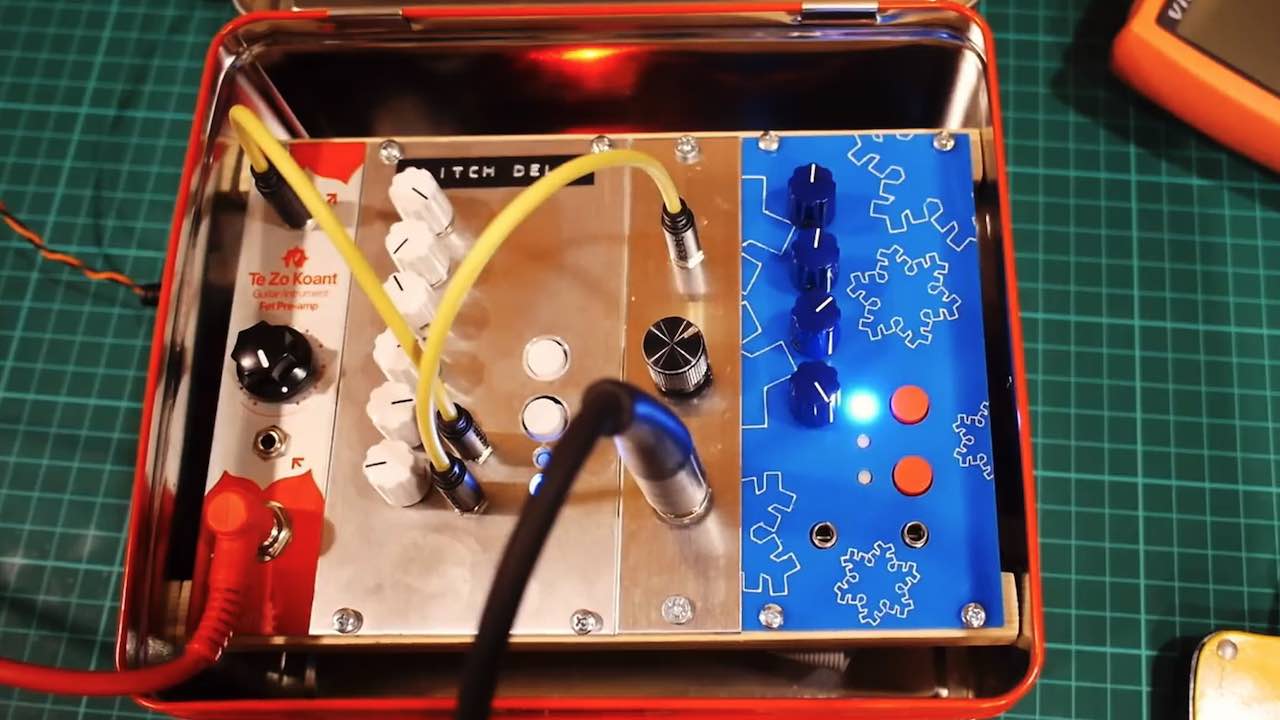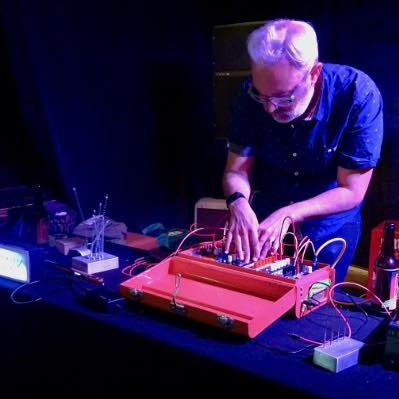Glitch Delay
A glitchy delay effect designed for the eurorack modular synth, using a Teensy 3.6 and the Teensy Audio Library.
 The effect consists of a standard delay line, or delay buffer, with multiple read heads that each read the audio in a different way. There is a feedback path, so the effected signal can be feedback into its self.
The effect consists of a standard delay line, or delay buffer, with multiple read heads that each read the audio in a different way. There is a feedback path, so the effected signal can be feedback into its self.There are 2 types of read head:
Loop heads – These heads loop small sections of audio. There are 3 of these. One that plays the audio an octave lower, one at the original octave, and one an octave higher. The size of each of these loops can be adjusted (size dial), as can the amount the loops move each time the loop starts again (jitter dial)
Reverse head – This head plays the buffer in reverse at the original octave.
The top white button allows you to set a tap tempo. This forces the looping heads to jump to a new position on every beat.
The bottom white button is the ‘freeze’. This freezes the write head. No new audio will be written into the buffer, the old audio will remain. This essentially ‘locks-down’ the audio, so it can be tweaked without the buffer changing.
Scott Pitkethly AKA Cutlasses
: Electronic instrument maker and musician

I've been making music and instruments as Cutlasses for 7 or so years. I started combining the making of hardware with the making of music when I needed a MIDI pedal to control my live set, and nothing on the market fitted the bill. I used a Teensy development board to make my own pedal. Once I'd discovered the Teensy Audio Library I went down a bit of a rabbit hole and have been making digital effects ever since, as well as electro-acoustic noise boxes using piezo contact mics. Which I incorporate into both my live sets, and recorded material. I am now working with STM32 micro controllers to make my own effects for the Eurorack modular synth format.
Connect with Scott Pitkethly AKA Cutlasses
How I can help you:
This project, along with most of my work, is open source. I have helped various people around the world build their own versions.
This project, along with most of my work, is open source. I have helped various people around the world build their own versions.
How you can help me:
Follow me on Instagram https://www.instagram.com/cutlassesmusic/
Twitter (@scolar)
Subscribe to my Youtube https://www.youtube.com/channel/UCMED5d9941L7g7lFIynQgOg. Check out my music at
https://cutlasses.bandcamp.com
Follow me on Instagram https://www.instagram.com/cutlassesmusic/
Twitter (@scolar)
Subscribe to my Youtube https://www.youtube.com/channel/UCMED5d9941L7g7lFIynQgOg. Check out my music at
https://cutlasses.bandcamp.com